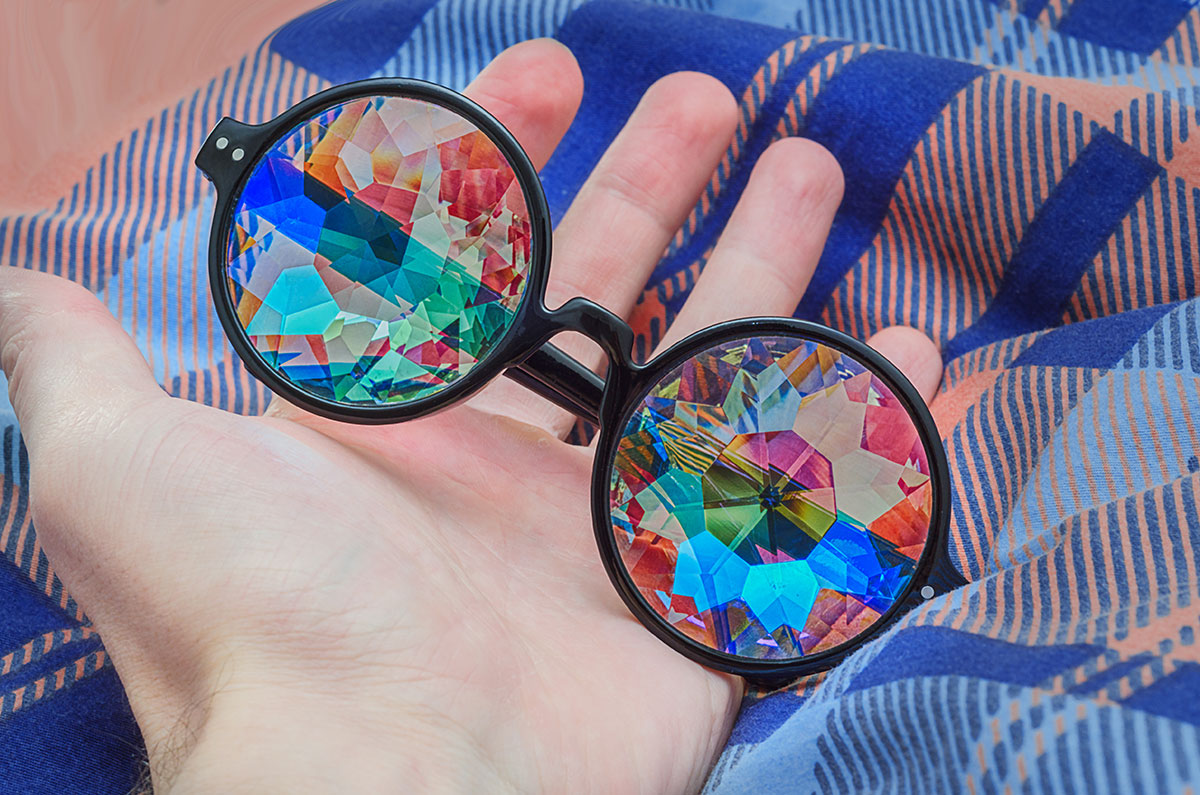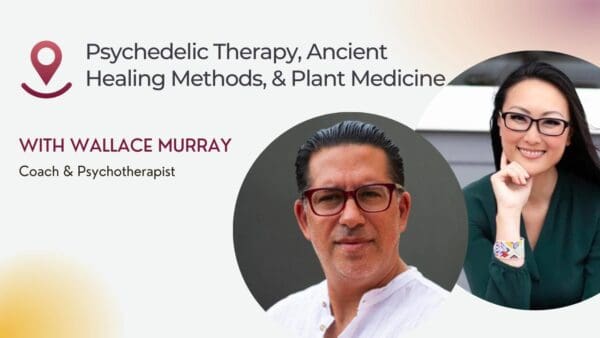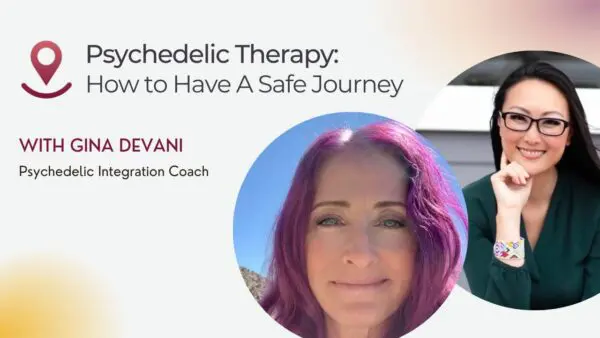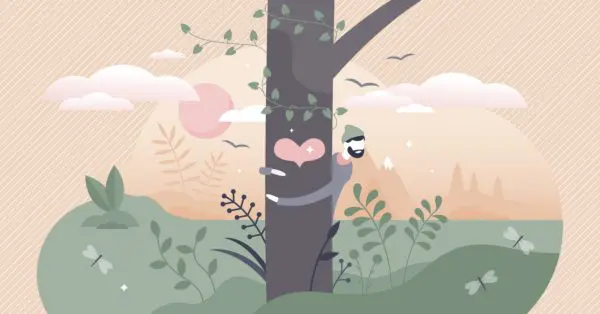Medical Editor: Dr. David Cox, PhD, ABPP
Mushrooms and LSD are Classical Psychedelics
When we talk about classical psychedelics, we are talking primarily about serotonergic psychedelics. Four well-known psychedelic drugs fall into this category: mescaline, dimethyltryptamine (DMT), psilocybin, and lysergic acid (LSD).
Psilocybin and LSD have a long history of clinical research as classical psychedelics. Magic mushrooms, however, do not. It is important to remember that psilocybin studies use synthesized psilocybin. LSD and psilocybin are not identical, but they are quite similar in action and produce cross tolerance effects.
While there are some structural similarities between the psilocybin in magic mushrooms and LSD, the two compounds will feel quite different in terms of body load, a term used to describe the physiological effects of psychoactive drugs. Body load is not an objective rating that can be measured but a subjective experience unique to the individual using the substance. But in general, the LSD trip is a light body load, more sociable and uplifting, while a mushroom trip is a heavy body load with more somatic symptoms like chest tightness, sinking feelings in the gut, or sensations of panic.
The most apparent difference between mushrooms and LSD is that one is a living organism that produces a psychoactive compound (mushrooms). The other is a synthetic ergoline, an alkaloid developed from the ergot fungus (LSD).
While LSD and shrooms trips have similar impacts on the mind and spirit, they have different effects on the body. Mushrooms also contain other compounds and alkaloids that can impact a trip, including those that might cause the gastric symptoms some find distressing or uncomfortable.
LSD is rapidly absorbed into the bloodstream through the mucous membranes in the mouth or on the tongue, but psilocybin has to be converted to psilocin internally before the trip truly begins. LSD is also very active on dopamine receptors, unlike psilocybin. Other significant differences between mushrooms and LSD are the duration of the journey, mushroom trips lasting 6-8 hours, and LSD trips lasting up to and beyond 12 hours depending on the dose and a person’s physiology.
Before we talk about the differences between trips, let’s quickly review some basics about psychedelic healing to better understand the similarities between LSD and psychedelic mushrooms, sometimes called shrooms.
Classical Psychedelics and Ego Death
We should note that the physiological effects of magic mushrooms have not technically been studied in clinical trials. Instead, psilocybin — the psychoactive alkaloid produced by magic mushrooms — has been studied in clinical trials.
There are several categories of psychedelic drugs, but we will only focus on the serotonergic category. There are three known types of classical psychedelics: phenethylamines, lysergamides, and tryptamines. Both LSD and psilocybin are tryptamines — but some magic mushrooms might also contain some phenethylamines.
All three types of classical psychedelic compounds are active at the 5HT-2A receptors in the brain, which is believed to play a role in the feelings of dissociation and visionary aspects that often accompany the ego-death experience of a therapeutic psychedelic trip.
These receptors also play a role in mediating the body’s response to stress and shock, and might be at the root of a scary or difficult experience. When activated en masse during a psychedelic trip, it is thought that this sudden overstimulation may result in unwanted feelings of nausea, dizziness, shaking, and even panic or fear as the consciousness begins to expand beyond its day-to-day idea of a subjective “self”.
This might be why a “bad” or difficult trip starts. But with a little preparation and awareness, people can navigate the intense feelings — especially if supported by an experienced practitioner or support person.
Beyond the subjective identity of the self is what some call a unitive consciousness, where one feels to be part of, and interconnected with, the entirety of the universe around them — rather than isolated or separate and confined to a body and sense of “I.” Call it Source, Spirit, or God, this quintessential psychedelic experience of expansion can be emotionally challenging and scary, especially for those who might try to cling to their identity and ego during the trip, a process some refer to as “ego death.”
Psychedelics and Ego Dissolution
If one is new to the field of psychedelic healing, “ego death” might not sound particularly desirable. The concept is similar to the “psychic death” described in Jungian psychology, which presents the egoic self as a vessel of an individual’s lived experiences. Ego death is synonymous with ego-dissolution described by more recent psychedelic studies.
A psychedelic-inspired mystical experience is not just about an ego death in terms of one’s outward identity, but an ego death in terms of how one relates inwardly to themselves, including their entire lived experience up to that point, their worldview, and the very concept of the “self”. Ego death might be the most common term used to describe this expanding consciousness. Still, ego dissolution might be a better frame for therapeutic purposes that value the participant’s qualitative experience.
While “death” can seem scary and permanent, dissolution might offer a gentler framing of one’s mindset before a psychedelic experience. Take salt dissolving in water, for example. While it appears the salt is gone – once the water evaporates, the salt will reappear, returning to its crystalline structure in a similar but different configuration than it was previously — no death, just transformation, or maybe rebirth.
When it comes to the potential for a transformative mystical experience, it seems that there is no difference between shrooms or LSD. Instead, these psychedelic drugs offer similar windows toward growth and spirituality.
Both psilocybin mushrooms and LSD can lead to therapeutic, ego-dissolving, mystical-type experiences. So the difference between a mushroom trip and an LSD trip has more to do with one’s expectations and mindset than which psychedelic drug they choose — with that said, do not forget about the importance of the environment and setting when comparing the difference between mushroom and LSD trips.
The Mushroom Trip
Magic mushrooms contain more than psilocybin, but also baeocystin, norbaeocystin, norpsilocin, and ß-carbolines, including cordysinin, harmane, harmol, norhamane, and perlolyrine. Some of these compounds are psychoactive on their own, and when combined with psilocybin, they contribute to what is known as an entourage effect. This is why a mushroom trip and a psilocybin trip, using isolated or synthetic psilocybin, are not physiologically the same experience.
Mushrooms are usually dried, and some say they may be chewed before swallowing to initiate absorption. Some recommend making mushroom tea, mushroom chocolates, or mushroom honey as a way of making the taste of magic mushrooms more palatable, easier to digest, and potentially delicious — but the taste can still prove unbearable for some. Some people report using isolated psilocybin instead or ground psilocybin mushrooms weighed out into gelatin capsules.
A psilocybin experience will last 6-8 hours, with after effects lasting from 1-24 hours. During this process, the body converts psilocybin to psilocin, binding to neuroreceptors and initiating the trip, which can be summarized into 5 phases: onset, come-up, plateau, come-down, and after effect.
A reported threshold dose among people who use psychedelic mushrooms is .25-.5 grams, with a standard dose in the range of 1-2.5 grams and a strong dose ranging from 2.5-5 grams. In clinical trials, participants reported feelings of rushing energy, anxiety, stomach distress, and shifts in body temperature, and feelings of rapid movement during the come-up phase.
As the mushroom trip moves into the plateau phase, people report visual enhancements and distortions known among recreational trippers as geometry and a perspective that objects are breathing or melting. At high doses, complete visionary tableaus with colorful shapes and figures can emerge. This visionary material is often useful for integration work.
After 2-4 hours of the plateau phase, people will move into 1-3 hours of the come-down phase and then, depending on the dose, will be in the after-effect phase for up to 24 hours. Integration work can begin immediately, and working with an experienced provider can help ensure both a safe and therapeutic mushroom trip.
The LSD Trip
While LSD has some cultural baggage around it because of drug war propaganda, it is generally considered safe. There is no significant association between LSD use and increased mental health problems. The “bad acid trip” of the past is now better described as a difficult experience — one that can be mitigated with a bit of preparation and attention.
When starting with LSD for the first time, it is recommended to begin with a low dose. A threshold dose of LSD is small, 15–25 micrograms, but positive experiences can occur with as little as a 50 microgram dose. A typical dose is 100 micrograms and allows for socialization and interaction. At 200 micrograms, the LSD trip can induce more significant anxiety and ego dissolution. An LSD trip will typically feel active from 8-12 hours, with low-doses lasting 6-11 hours and the after-effects lasting anywhere between 12-48 hours.
Unlike psilocybin mushrooms, LSD is very active on the dopamine system and is shown to activate glutamate transmission. This might explain why people report more feelings of increased energy and euphoria with an LSD trip than with a psilocybin trip. LSD produces visual activity more comparable to dreaming. Synaesthesia is occasionally reported, where sensory stimuli are experienced through other primary senses — such as feeling a color or seeing a sound.
The hallucinatory effects of LSD seem to be caused by the increased connectivity between the visual cortex of the brain and other brain areas that would not typically be interacting. This phenomenon is called interhemispheric communication. It occurs across many parts of the brain and involves the limbic system. With this in mind, the LSD trip might feel like more of an interactive, dream-like playground when compared to a mushroom trip.
Because LSD has demonstrated an ability to increase creative capacity and artistic performance, the LSD trip can often take on a very different direction than a psilocybin trip, depending on the trip’s dosage and setting.
A Final Thought on LSD vs Mushrooms:
No trip is the same as the next, and while there are some common sensations and neurochemistry involved, there is no way to predict how a trip will go. While clinical trials can offer standards and insights, there is no way to control for all the variables involved in a trip outside of a clinical environment.
For this reason, it is also helpful to consider anecdotal trip reports of these kinds of experiences. According to people who frequently use psychedelics, mushroom trips are shorter but more likely to cause gastric issues. LSD trips are longer and more like to lead to increased energy and emotional enhancement during the actual experience.
Both trips can lead to the kind of mystical mindstates that support long-term behavioral change. It is vital to remember that the trip or medicine is never a cure, but that the therapeutic potential of an LSD trip or a mushroom trip is intricately linked to the intentional reflection and integration of the experience — as well as long-term psychological support.








